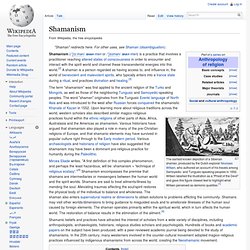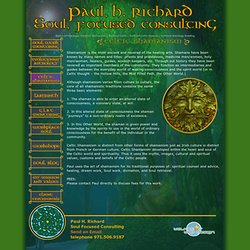

481 - Strange Lapps and Their Magical Drumming Maps. When the wise men of Europe’s Far North want to see beyond the merely visible, they bang their noid drums (1) until the rhythm and concomitant incantations prise open the creaky doors of perception.

The skin that forms the membrane of their drums is decorated with cryptic symbols that constitute a symbolic landscape. On this mental map is placed a piece of bone, which dances across the membrane as the shaman bangs the drum’s frame. It is his job to translate the bone’s erratic hopscotchery across this magical universe into meaningful comments on events past, present and future. These rituals are reminiscent of other pagan divinations that distill meaning from randomness - be it by the reading of tea leaves, tarot cards or bird entrails.
They also resemble the path from extasy to clarity popular in the continuum of shamanic cultures circling the Arctic, of which the Saami (2) form an integral part. Historically, shamen played a central part in Saami life. . (3) Formerly known as Lapland. Channupa - Canupa - Sacred Pipe. Native American cultures are very political nowdays, the larger tribes are very careful about what they share with non-natives.

The Lakota (the western bands of what we know as the Sioux) especially are very exclusive when it comes to their seven sacred rites and ceremonies. In every ceremony and rite the Chanupa (Pipe) is integral, without the pipe no ceremonies could be undertaken. It takes the prayers, and the cries, and the breath of the invisible to the Creator via the smoke. It is a very important Being. A Chanupa has it's own life, it's own energies. Many people do not want the heavy responsibility of holding a Chanupa. Taking drugs is a big no no for a person who uses a Pipe.
A Pipe holder is in many instances a Sundancer, a person who goes through a spiritual, torturous experience every year for the People. The pipe will make you get up at any hour of the day or night to smoke it, it will not allow you to finish what you are doing before you smoke it.
Shamanism. Foundation for Shamanic Studies founded by Michael Harner. Shamanism. The Shaman (trailer) Home. Animal Spirit Guides Shamanism. New Age Frauds & Plastic Shamans. Healing Rituals. Tatyana Sem Russian Museum of Ethnography During the late nineteenth and early twentieth centuries, healing was the main function of Siberian shamans.

They healed many different diseases, such as sterility, protracted childbirth, heart pain, dystrophy, cough, skin diseases, stomach pains, diseases of the throat and eyes, pains in the limbs, and madness. During epidemics they also attempted to cure smallpox and measles, which required much effort. A single principle was fundamental to shamanic medical treatment: a shaman acted on behalf of spirits and deities, supreme entities more powerful than humans. Disease was associated with spirits' activities. Helper spirits for hunting and fishing placed at a Khant sacred place, 1909-1910. The most complicated and efficient form of healing practice by Siberian shamans included kamlaniye, a shamanic seance that usually continued for several days. The Ecologist archive: A View from the Headwaters.
In this remarkable essay the late Colombian anthropologist Gerardo Reichel-Dolmatoff presents a powerful view of the Amazon river as seen by the area's tribal inhabitants. In doing so, he questions the validity of our modern views of landscape and nature. This article is adapted from Gerard Reichel-Dolmatoff's opening address to the First International Congress of Ethnobiology, which took place in Belem Do Para, Brazil, in July 1988. It was published in The Ecologist Volume 29 Number 4, July 1999. Coming from Colombia, I can say that I come from the head-waters of the Amazon. When I leave the country, I fly over its many arms and branches stretching out from this great body of water. Www.desales.edu/assets/desales/SocScience/Oroqen_shaman_FSSForumAug07.pdf. Aado Lintrop's www pages. Www.folklore.ee/folklore/vol10/pdf/teuton.pdf. Shamanism. The earliest known depiction of a Siberian shaman, produced by the Dutch explorer Nicolaes Witsen, who authored an account of his travels among Samoyedic- and Tungusic-speaking peoples in 1692.

Witsen labelled the illustration as a "Priest of the Devil" and gave this figure clawed feet to highlight what Witsen perceived as demonic qualities.[1] Shamanism (/ˈʃɑːmən/ SHAH-mən or /ˈʃeɪmən/ SHAY-mən) is a practice that involves a practitioner reaching altered states of consciousness in order to encounter and interact with the spirit world and channel these transcendental energies into this world.[2] A shaman is a person regarded as having access to, and influence in, the world of benevolent and malevolent spirits, who typically enters into a trance state during a ritual, and practices divination and healing.[3]
Paul H Richard Soul Focused Coaching Evolutionary AstrologyPortland shamanism Portland celtic Portland celtic shaman Portland astrology reading. Shamanism is the most ancient and revered of the healing arts.

Shamans have been known by many names and titles: priests and priestesses, medicine men/women, holy men/women, healers, guides, wisdom-keepers, etc. Through out history they have been revered as important members of the community. Learn about shamanism.